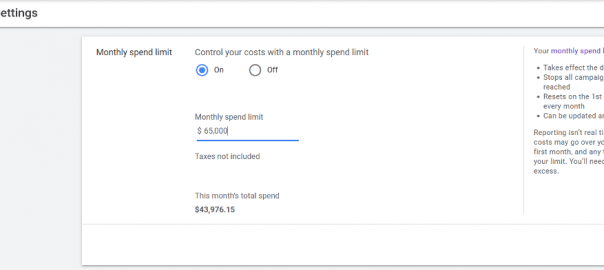Remember that giddy feeling on the first day of class? The instructor hands out the syllabus of everything that will be covered. Fast-forward a few weeks and you feel like you’re getting curveballs left and right?
To put it mildly, that’s what running online ads felt like this year. Not only that, but the stories have only just begun! But don’t worry. In today’s post, I’m going to cover the 10 biggest stories in online advertising in 2021 and what they mean for 2022.
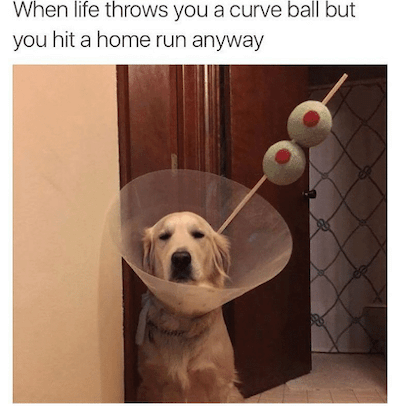
So cue the bell ring! This is your *real* syllabus (read: survival guide) for 2022. Class is now officially in session.
1. Google ruffles our keyword matching feathers
Keywords are the backbone of PPC. So of course Google would throw us some keyword curveballs this year!
What went down in ’21
For keywords, 2021 was a rollercoaster ride. First, we saw the sunset of our beloved modified broad match in February. Google’s reasoning was that broad match is more effective now, and that modified broad and phrase match often serve the same use case.
Saying this ruffled advertisers’ feathers is putting it lightly. Many people used modified broad since it acted as a “happy medium” match type. Between the pressures of the pandemic combined with the ever-rising challenges of PPC advertising, many felt these keyword changes from Google were insensitive, unnecessary, and untimely.
Then, in September, just as the dust was beginning to settle, Google announced more changes to keyword matching behavior that stirred the pot again. In short, exact match logic will now be used for all match types, and if you have multiple eligible keywords that aren’t identical to the query, Google will look not just at Ad Rank but at relevance, too. That second part had many advertisers, like PPC Chat host Julie Bacchini, quite unsettled. Isn’t that what you’ve been doing all along, Google?
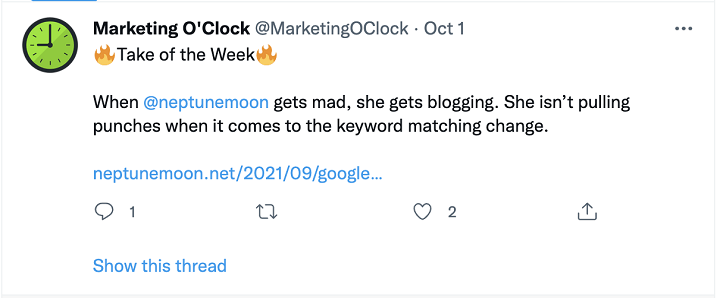
As if that wasn’t enough, it then claimed that because of these changes and improvements, there is no longer any benefit to using multiple match types for the same keyword if you’re pairing broad match with Smart Bidding.
This left many advertisers in a tissy… In fact, Greg Finn even wrote an article to argue this claim.
What to do in ’22
- With the loss of modified broad match, I encourage you to pair broad match with audience targeting as a workaround.
- Multiple match types or not, Google is right on one thing: less is more! Using plurals or slight variations is a personal pet peeve of mine. Downsize your list to just the core terms you need and stop wasting time on the rest!. Only key core terms are necessary in your keyword lists.
- Keep keywords grouped together in cohesive, thematically consistent ad groups.
- Above all else, let’s also not forget about negative keywords, as they can be your lifeline if you’re stuck using match types that aren’t the most ideal.
Rethinking your keywords for 2022? Our free keyword research tool can help!
2. Facebook advertising falls victim to Apple’s iOS 14 update
Would it really be a 2021 PPC roundup without talking about the infamous iOS 14 update?
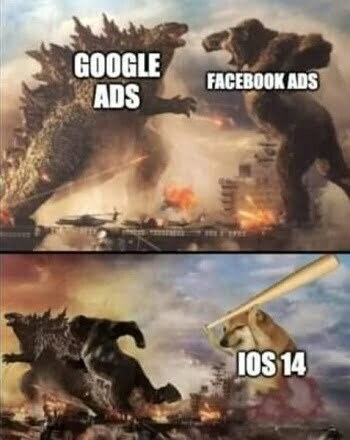
What went down in ’21
On April 26, Apple finally rolled out the privacy-first iOS 14.5 update that now allows users to opt out of being tracked by apps—apps like, say…Facebook? Which provides tracking data so advertisers can track conversions and create retargeting audiences?
Advertisers are now facing incomplete data, shrinking audiences, and rising CPMs. Not to mention all the hoops they now have to jump through with Aggregated Event Measurement, domain verification, and shorter attribution windows.
This is because iOS14 allows for users to opt out of data tracking. Now, I understand and respect the importance of consumer data privacy, but as an advertiser, it’s frustrating. If you’re going to be subjected to ads anyway, why not have them be personalized?
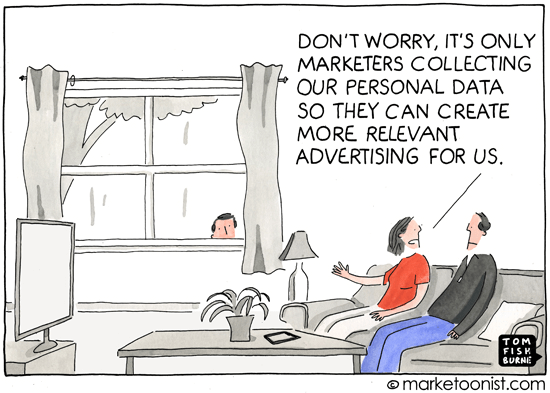
Now, Facebook and industry experts alike are rushing to find targeting strategy alternatives. Some exciting progress has come of it!
What to do in ’22
This might sound crazy, but don’t give up on Facebook ads! It is still an effective channel for growing your business, so if you adapt and continue using it, you’ll have an advantage over competitors who give up.
We have lots of resources to aid you in your 2022 Facebook advertising strategy:
- Follow these tips to keep your conversion campaigns running successfully.
- Use Messenger and lead form ads to generate leads without conversion campaigns.
- Read the seven ways we’re combatting rising Facebook CPMs due to iOS14.
- Implement the Facebook Conversions API
- Continue to upload customer lists and try out these post-iOS Facebook ad strategies like targeting broader audiences.
3. Expanded text ads start packing their bags
Bon voyage, expanded text ads! The removal of these assets was far from quiet, let’s find out why:
What went down in ’21
Back in March, responsive search ads (RSAs) replaced expanded text ads (ETAs) as the default ad type for Search campaigns. Then in August, Google told us we’ll be bidding (no pun intended) our goodbyes to ETAs in June 2022.
Don’t hold your breath, though. ETAs will still run after the change takes effect. What’s really being retired is the ability to edit and create new ETAs. Advertisers will only be able to pause, enable, or remove them.
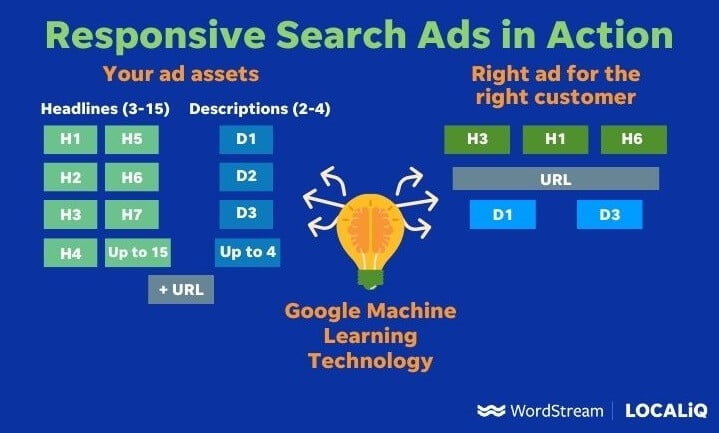
What to do in ’22
Even though RSAs are effective, the platform still lacks useful reporting for the different ad variations. And even though the change will take effect about half way through 2022, there are things you should be doing now so it doesn’t negatively impact your account. That being said:
- Start building out RSAs now and establish RSA benchmarks so you can know what to expect once ETAs are out of the picture.
- Test your ETAs now and use the detailed reporting to inform your RSA strategy.
- Perfect any ETAs you’ll want to keep running after June 2022 being.
- And keep your fingers crossed for better RSA reporting, as it’s been a common ask in the PPC community.
4. Third-party cookies start unpacking their bags
Google is really just slowly peeling off the bandaid here for us.
What went down in ’21
On June 24, Google announced that the feared deprecation of third-party cookies would be pushed out to 2023.
Google stated that that in order to build truly privacy-preserving technology, it needs to “move at a responsible pace” to allow “sufficient time for public discussion on the right solutions, “avoid jeopardizing the business models of many web publisher,” and “ensure that cookies are not replaced with alternative forms of individual tracking, and discourage the rise of covert approaches like fingerprinting.”
That being said, testing for FLoC—Google’s solution for behavioral targeting in the absence of third-party cookies—has been pushed out to Q1 2022.
What to do in ’22
No action is needed for FLoC, but keep your eye on it.
As for third-party cookies, you’ve heard this time and time again, but keep finding ways to collect more first-party data and get familiar with new solutions available like enhanced conversions, which we cover in this update roundup.
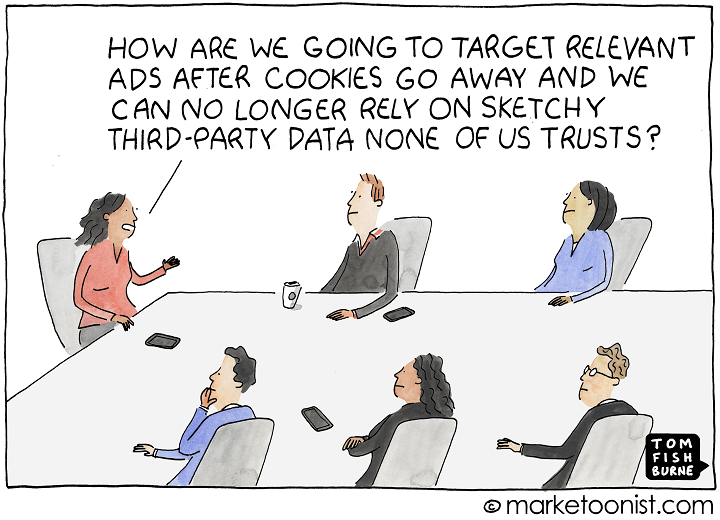
5. Google does a lil’ search term report quid pro quo
Fun fact: this is one of my favorite PPC stories from 2021. Read on to find out why.
What went down in ’21
We know the search terms report was overhauled back in 2020 when low volume searches were taken out of view due to privacy.
This was a tough pill for advertisers to swallow, since we used to be able to see impression and click data on ALL search terms.
Fast forward to August, and advertisers notice the report is showing all search term data once again!
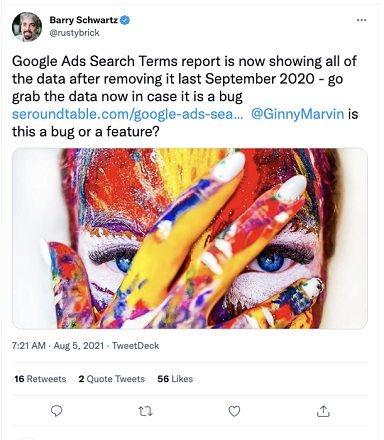
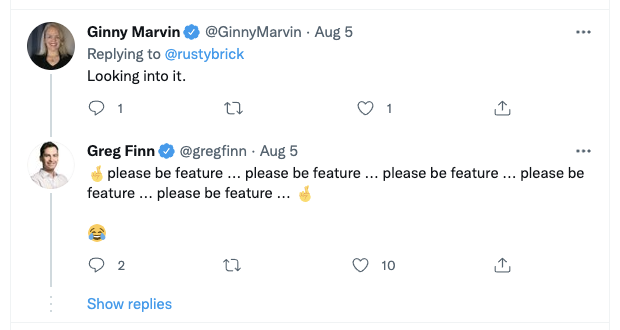
Turns out it was just a bug that left us feeling sorely disappointed. But the search terms report changed again in September with some good news.
The report still does not show low volume terms that don’t meet the privacy threshold, but it now shows impression data for terms that didn’t get clicks, moving forward and prior to September 2020. In exchange, though, Google mentioned that in February of 2022 it will be removing any search terms prior to September 2020 that don’t meet the privacy volume thresholds.
What to do in ’22
Be sure to save any historical search terms report data you want to hold onto before February of the coming year! However, the search space has changed so much over the last couple of years that the impact those old searches hold will most likely be minor.
Also, start taking advantage of the search terms report a bit more in 2022, since we’ll be able to get more insights again. While this change wasn’t incredibly significant, it was a feather in Google’s cap to give advertisers an advantageous update for once. The platform may seem to have its own vendetta, but clearly it’s still listening and catering to its customers somewhat. Personally, this is the one PPC story from 2021 that makes me feel encouraged and hopeful for 2022.
6. Google Marketing Live leaves us all baffled
Google Marketing Live Stream 2021 was a…snoozefest?
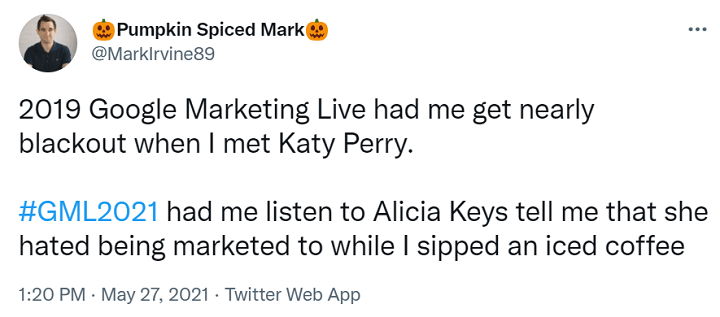
I love industry events as much as the next advertiser, but this year’s Google Marketing Live summit was resoundingly confusing and underwhelming. Let’s break down why.
What went down in ’21
Let’s start off with one of the culprits behind the 2021 GML hate: customer match thresholds were not really lowered despite Google’s promises. While yes, the platform made the option of these hyper-specific audiences available to accounts below $ 50,000 in lifetime spend, the fine print read that customer match will only be available to those accounts in observation mode. This still makes targeting them inaccessible to small businesses with lower budgets.
Aside from that, the announcements were either so convoluted or so minor that they caused other roundups to share inaccurate information (understandably so).
What to do in ’22
Okay so GML2021 wasn’t totally hated on. Confusing or not, there are some useful features to take advantage of in the coming year, like:
- The new black-owned attribute option in Google Shopping.
- Image extensions out of beta and the tROAS bidding strategy for Video action and Discovery campaigns.
- Better visibility into performance max campaign reporting.
- My new personal favorite: the Insights page. This page gives advertisers an in-depth look at spend and budget pacing, recommendations, and more. For me and my clients, it’s been surprisingly useful as a way to look into Google’s thinking and brainstorm new optimization ideas to execute on our own.
7. Shopify & Google become besties
GML2021 had another exciting announcement to come of it: Shopify and Google are now two peas in a pod.
What went down in ’21
While Shopify users could always leverage both platforms separately, Google announced this past spring that it’s about to get much easier to use them together. Users of Shopify will now be able to set product placement across all of Google’s entities like Maps, Images, Lens, and YouTube in just a few easy steps.
They’re calling this new collaboration the “Shopping Graph,” as it provides shoppers with more information than ever before about the products they’re viewing and where else they can find them.
What to do in ’22
Shopify’s Google Channel directly in the Shopping platform makes it easier for Shopify users to reach customers beyond the SERP shopping results, regardless of their Merchant Center set up in Google Ads. With an evolving buyer’s journey, this is a futuristic look at how to capture purchases across every step of the funnel.
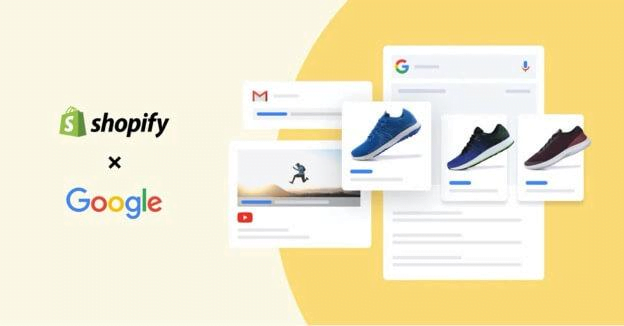
8. Facebook goes out for 6 hours
You might be thinking: “big deal.” I know I was. But for advertisers putting lots of hard earned cash into Facebook ads, it was a big deal. Let’s find out why.
What went down in ’21
On October 4, the app, the web version, Instagram, Messenger, and all of Facebook’s assets went dark for six hours on a Monday. All of Facebook’s servers had gone down.
For users, this was a wakeup call to not totally immerse their lives in social media. For advertisers, this meant opportunity lost. For Facebook, it meant $ 79 million in revenue loss.
What really happened behind the scenes that day, we may never know. What we do know is this was a message to all advertisers: always have a backup plan!
What to do in ’22
In this world, nothing is guaranteed. Even big, bad Facebook has its moments. If this doesn’t get you sold on a multichannel strategy in 2022, I don’t know what will! While the outage was minor to most advertisers, it’s important to be prepared for your advertising worst case scenario. When you’re running multichannel advertising, you’re covering your own butt. If a platform goes down, you’ll still be promoting your business elsewhere.
9. Google Ads monthly spend limits sneak onto the scene
If you’re thinking “Isn’t this already a thing?” you probably aren’t paying for Google via credit card. For card payments, this is a new feature!
What went down in ’21
Google quietly rolled out monthly spend limits this year. They function alongside campaign daily budgets—which continue to be a necessity. Monthly spend limits are implemented at the account level and act as a safeguard against overspend across campaigns. Beware, though, once the limit is hit your ads will stop showing.
What to do in ’22
This can be a great solution for accounts that are tight on budget in 2022. However, there will need to be a level of restraint when using this feature since setting your limit too low can also ultimately limit your results.

10. Facebook reveals its secrets
I wanted to finish off with a 2021 PPC story underdog. This update didn’t get a ton of coverage, but can tell us a lot about how to plan our 2022 Facebook ads strategy.
What went down in ’21
In June, Facebook dropped an article and video series on how its News Feed algorithm works. But the most interesting part of it for advertisers was its explanation on how it uses machine learning to deliver ads.
In comparison to Google, Facebook doesn’t make clear-cut formulas like Ad Rank or Quality Score available to advertisers. When Facebook released these algorithm insights this year, it definitely caught my eye.
It comes down to three indicators that equate to an “ad score” (not visible to advertisers). This score helps the algorithm determine when and where to show your ad. Those factors are:
- How the advertiser sets the ad up. This can include details like Facebook advertising campaign objectives, audience targeting, location settings, and more.
- The value of the ad. An ad’s total value is based on how much the advertiser is willing to bid on that ad combined with how likely the viewer is to engage with it, as well as the ad’s overall quality.
- Each viewer’s preferences. As an advertiser, you get to choose what type of person you’d ideally like to see your ad. Similarly, Facebook users have the option to set up ad preferences to give the Facebook News Feed further guidance on what’s the best fit for them.
What to do in ’22
While bid is mentioned here, I think one of the main lessons we can keep in mind for 2022 is that you can’t buy quality.
Facebook is looking for high-value ads with attractive visuals and compelling copy. You’ll want to avoid what Facebook Ads calls “low-quality attributes,” like too much text in an image, sensationalized language, or click-bait.
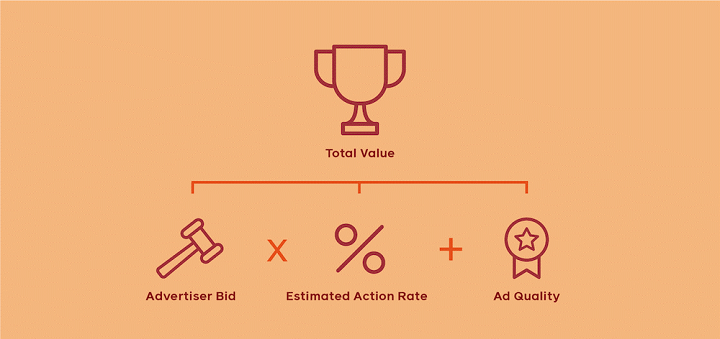
Not just a 2021 recap—your 2022 survival kit!
In order to improve for the future, we must look at the past. Between everchanging platforms and trends, staying on top of the latest and greatest from 2021 will save you from headaches in 2022.
While there won’t be a test to go along with today’s lessons, here’s a quick study guide of what we covered to help you prepare for 2022:
- Google changed keyword match types and behaviors.
Keep your keywords cleaned up. - Facebook was impacted by the Apple iOS14 update.
Be nimble and adapt with new strategies. - Expanded Text Ads will be a thing of the past.
Test your ETAs like crazy and get comfortable with responsive search ads. - Third-party cookies
Stay alert for first-party data targeting solutions in 2022. - Google’s search terms report got a facelift.
Start using it more frequently and collect the data you need before February. - Google Marketing Live didn’t live up to the hype.
Better luck next year. (But also check out the Insights page!). - Shopify and Google join forces.
Use Shopify’s Google channel to capture more leads across your funnel. - Facebook had a six hour long “whoopsie.”
Always have a backup plan! - Google Ads monthly spend limits make an appearance.
Use it to make budgeting easier. - Facebook puts out an ad ranking tell-all.
Stay focused on creating high-quality ads that users want to see and engage with.
With all these updates, a little bit of confidence in automation, a touch of preparation, and a lot of content quality love can go a long way. Use these lessons as a pathway to results that will make your upcoming year the best one yet.
Digital & Social Articles on Business 2 Community
(29)
